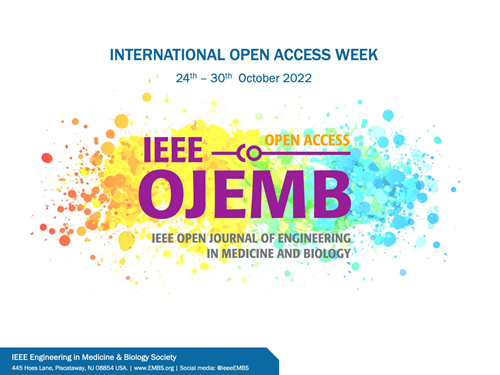Biomimetic Chitosan-Based Hydrogels for Sustainable Wound Healing With AI/ML Insights
IF 2.9
Q3 ENGINEERING, BIOMEDICAL
IEEE Open Journal of Engineering in Medicine and Biology
Pub Date : 2025-04-18
DOI:10.1109/OJEMB.2025.3562382
引用次数: 0
Abstract
Wound healing process is associated with multifaceted complications and is a functional way to advance the therapeutic process. Polymeric biomaterials exhibit structural mimicry with the extracellular matrix of the tissue to be regenerated and they also avoid chronic inflammation and immunological responses. Chitosan, a biopolymer demonstrates exceptional healing properties because of its biocompatibility, biodegradability, antimicrobial nature and affinity for biomolecules. Biomaterials consisting of chitosan along with herbal extracts could be ideal for wound healing. Click chemistry can provide one of the best ways to combine these bio-actives with chitosan. Advancing wound healing strategies with artificial intelligence /machine learning approaches can be employed further to boost the clinical efficacies of bioactive-loaded chitosan composite hydrogels. This review article investigates functionalized wound dressings with special emphasis on chitosan-based hydrogels, their effects on wound healing, and advanced approaches to increase hydrogel benefits by adding bioactive substances to form nanocomposites.基于仿生壳聚糖的可持续伤口愈合水凝胶与AI/ML的见解
伤口愈合过程与多方面的并发症有关,是推进治疗过程的一种功能方式。高分子生物材料表现出与待再生组织的细胞外基质的结构相似性,并且它们也避免了慢性炎症和免疫反应。壳聚糖是一种生物聚合物,由于其生物相容性、生物可降解性、抗菌性和对生物分子的亲和力而具有优异的愈合性能。由壳聚糖和草药提取物组成的生物材料可能是理想的伤口愈合材料。点击化学可以提供将这些生物活性与壳聚糖结合的最佳方法之一。利用人工智能/机器学习方法推进伤口愈合策略可以进一步提高生物活性负载壳聚糖复合水凝胶的临床疗效。本文综述了功能化伤口敷料,重点介绍了壳聚糖基水凝胶及其对伤口愈合的影响,以及通过添加生物活性物质形成纳米复合材料来增加水凝胶效益的先进方法。
本文章由计算机程序翻译,如有差异,请以英文原文为准。
求助全文
约1分钟内获得全文
求助全文
来源期刊

IEEE Open Journal of Engineering in Medicine and Biology
ENGINEERING, BIOMEDICAL-
CiteScore
9.50
自引率
3.40%
发文量
20
审稿时长
10 weeks
期刊介绍:
The IEEE Open Journal of Engineering in Medicine and Biology (IEEE OJEMB) is dedicated to serving the community of innovators in medicine, technology, and the sciences, with the core goal of advancing the highest-quality interdisciplinary research between these disciplines. The journal firmly believes that the future of medicine depends on close collaboration between biology and technology, and that fostering interaction between these fields is an important way to advance key discoveries that can improve clinical care.IEEE OJEMB is a gold open access journal in which the authors retain the copyright to their papers and readers have free access to the full text and PDFs on the IEEE Xplore® Digital Library. However, authors are required to pay an article processing fee at the time their paper is accepted for publication, using to cover the cost of publication.
 求助内容:
求助内容: 应助结果提醒方式:
应助结果提醒方式:


